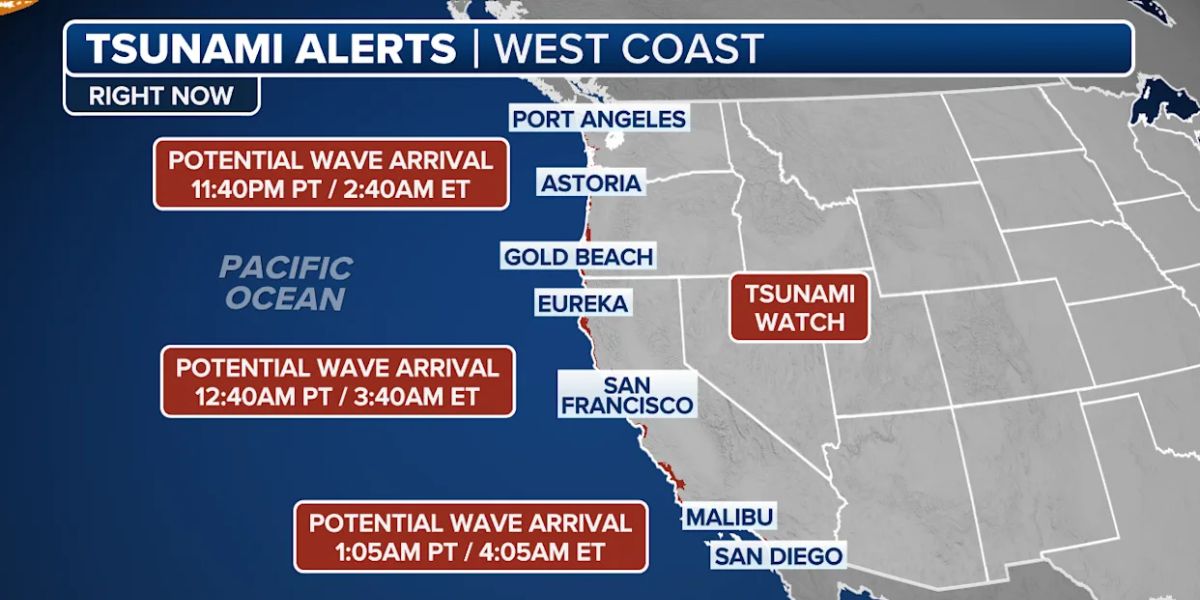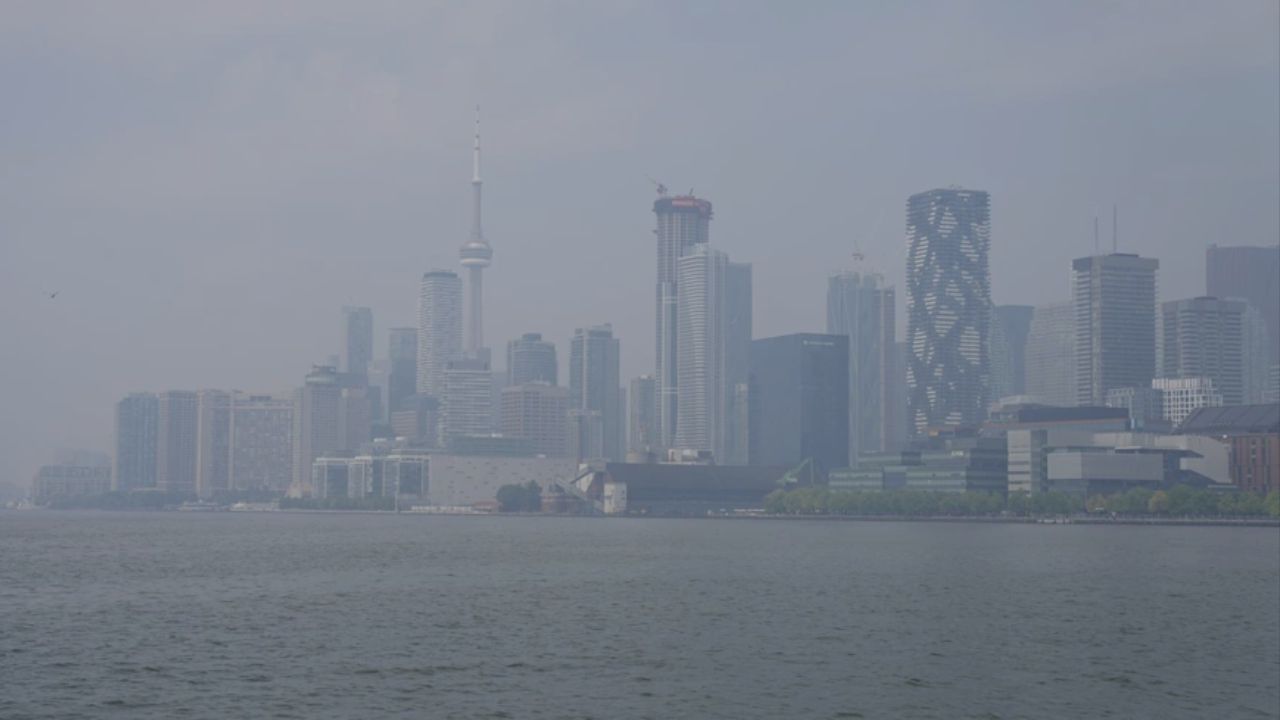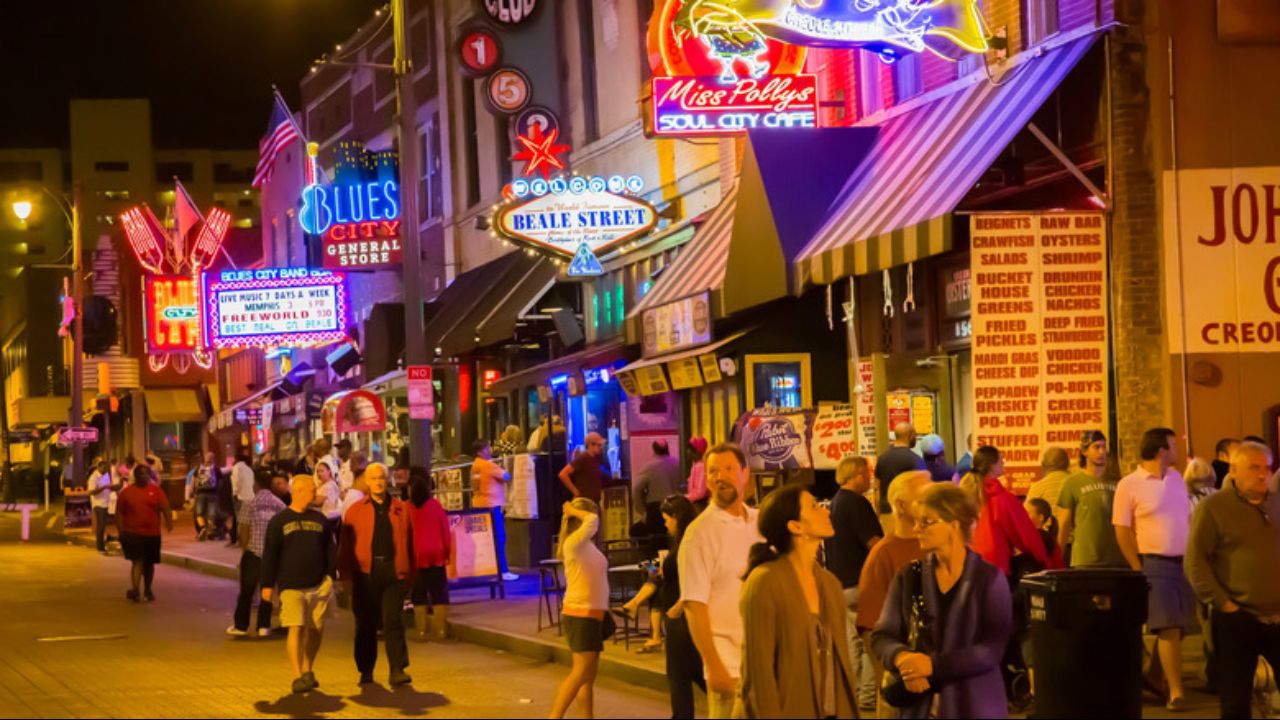After the initial waves struck parts of Russia and Japan, a powerful 8.8 earthquake shook the upper Pacific Ocean Tuesday evening, sending out tsunami alerts for the whole state of Hawaii, parts of Alaska, and the West Coast.
According to officials, the earthquake struck at 1:24 p.m. Hawaiian Time, approximately 74 miles east of Kamchatsky, which is located on the southeast coast of the Russian Pacific Ocean peninsula.
Multiple aftershocks with magnitudes as high as 6.9 caused tsunami warnings and dangers throughout the region after it struck 11 miles beneath.
Since the created waves are predicted to reach Hawaii at approximately 7:17 p.m. HST, or 1:17 a.m. ET, residents of Honolulu are being warned to evacuate to higher ground.
In order to facilitate people’ efforts to reach higher ground, Joint Base Pearl Harbor-Hickam on the island of O’ahu has opened portions of its access roads, the base stated on X.
During a news conference, Governor Josh Green urged locals to stay calm and to avoid coastal areas, but he also calmed those who were concerned by reminding them that no residents perished in the 2011 tsunami, which had waves as high as seven feet.
A glimpse of what the islands can anticipate was provided by National Oceanic and Atmospheric Administration tsunami expert Dr. Chip McCreery.
On Tuesday, McCreery told, “This is not a small threat, this is the kind of threat where the water could flood the land.”
“Tsunami amplitudes of about 10 feet above normal sea level are depicted in the models in certain locations.”
However, for those of you who typically observe the surf, a 10-foot wave is suitable for surfers. A 10-foot tsunami, however, is very different,” McCreery clarified.
“That means that the sea level will rise to about 10 feet above normal and remain there for maybe five to ten minutes before dropping back down.”
The state’s whole coastline would be impacted, and there may be “multiple floodings” of the islands that might linger for hours.
There is also a tsunami warning for Alaska’s Aleutian island chain. While some areas of the Last Frontier state’s coastal landmass are under a less severe tsunami watch, other areas are subject to the more severe warning classification.
Parts of Alaska are predicted to see waves by 4:46 p.m. local time.
According to sources, waves are predicted to hit the Pacific Coast, which includes California, Washington, and Oregon, at 11:40 p.m. in the north and almost an hour later in southern California. The region is also under tsunami watch.
Later, Los Angeles was placed on the more serious tsunami advisory by the National Weather Service.
“The tsunami is expected to arrive tonight around 1 AM. Stay off the beach and away from harbors and marinas if you live near the coast. In a post to X, the National Weather Service Los Angeles said, “Do not go to the coast to watch.”
“Pay close attention to what local EM officials are telling you.”
There is also a tsunami watch in effect for coastal California.
On social media, President Trump responded to the unfolding, potentially disastrous situation.
The president posted on X, “A Tsunami Warning is in effect for those living in Hawaii due to a massive earthquake that occurred in the Pacific Ocean.”
“The United States Pacific Coast and Alaska are under a tsunami watch. Trump added, “Japan is also in the way.” “REMAIN SAFE AND STRONG!”
The US is not the only nation that has been advised to exercise caution.
According to Tsunami.gov, a number of Pacific nations, including Japan, Taiwan, the Philippines, Indonesia, New Zealand, French Polynesia, and more than six small islands that might be in the path of the wave, have issued tsunami hazard warnings.
According to that website, other nations in Central and South America, including El Salvador, Chile, Costa Rica, Panama, Guatemala, Colombia, and Mexico, have also issued danger advisories.
The 8.8-magnitude earthquake is the biggest since the devastating 2011 earthquake and tsunami in Japan and the third greatest of its kind in the past 25 years.
Five earthquakes, the greatest of which had a magnitude of 7.4, occurred in the same region off the coast of Kamchatka earlier in July.
Officials stated that the situation is evolving and that they are currently assessing the tsunami’s threat level.






